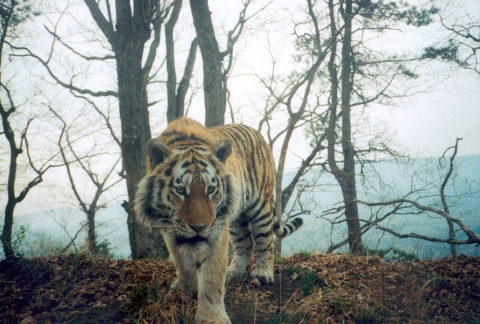Nepal celebrated Global Tiger Day in 2022 with news that its tiger numbers have climbed from 121 tigers in 2009 to 355 tigers in 2022. That makes Nepal the only country so far out of the then-13 tiger nations to achieve a 2010 goal by the range countries to double their numbers by 2022. In fact, Nepal has more than doubled their tiger population since 2010. What can we learn from their methods?
Nepal is home to a vast diversity of iconic species, including tigers, rhinoceroses, snow leopards, Asian elephants, red pandas, hundreds of bird species, reptiles, amphibians, and more. Many of these species are endangered, and conservationists and government authorities are working tirelessly to ensure their survival. Nepal’s wildlife conservation efforts include not only protecting the species and their habitat, but also working with local communities to minimize harm from conflicts between people and wildlife and promote coexistence.
Nepal’s conservation strategy is an exemplary model. Conservationists, including non-governmental organizations (NGOs), work very closely with each other and with communities.
Conservation activities include working to enhance mitigation efforts to minimize human-tiger conflict, improve habitats, and assist with population monitoring and patrolling efforts. In addition, Nepal provides a percentage of tourism dollars to communities living near wildlife areas, thereby enabling local communities to see a return on their investment in wildlife conservation.
Government ministries also closely collaborate and cooperate to protect their wildlife populations. Similar to the United States, wildlife conservation authorities are split between several ministries. Nepal’s Department of National Parks and Wildlife Conservation manages the national parks. The Department of Forests manages wildlife outside protected areas. The Nepal Army and Nepal Police also play a major role in the reduction of poaching.
The U.S. Fish and Wildlife Service, through our International Affairs Program, partners with key stakeholders in Nepal, both government ministries and NGOs, on tiger conservation. Through the Rhinoceros and Tiger Conservation Fund, we provide support and financial resources to these key stakeholders for conservation programs that directly conserve tiger populations.
In 2010, the world’s tiger population was estimated to be around 3,200. Tiger numbers have increased to an estimated 4,500 today, but tigers are now extinct in Cambodia, Laos, and Vietnam. Currently, wild tigers can be found in 10 range countries in Asia: Bangladesh, Bhutan, China, India, Indonesia, Malaysia, Myanmar, Nepal, Russia, and Thailand.
Threats
In the early 1900s, there were an estimated 100,000 tigers on the Indian subcontinent, but by the early 2000s, tiger numbers and their habitats were devastated. Nearly 95% of their habitats were destroyed, and tiger numbers were decimated by poaching. Today, tigers are also impacted by declining populations of prey due to a number of factors and possibly exacerbated by climate change climate change
Climate change includes both global warming driven by human-induced emissions of greenhouse gases and the resulting large-scale shifts in weather patterns. Though there have been previous periods of climatic change, since the mid-20th century humans have had an unprecedented impact on Earth's climate system and caused change on a global scale.
Learn more about climate change .
Rural communities adjacent to protected areas that harbor tigers have always faced a degree of conflict with these predators. This conflict has steadily increased with shrinking habitats and growing human populations.
The poaching of tigers continues to feed the illegal trade in tiger pelts, bones, claws, teeth, and other body parts. Poaching and wildlife trafficking of tigers has been and continues to be a major threat to wild tigers across their entire range, including in Nepal.
While the pressures faced by tigers and their prey base continue, the announcement that Nepal’s tiger population has increased is still a celebratory moment. It is even more impressive that a small nation such as Nepal is the front runner in the pledge to double its tiger numbers in 12 years. Nepal’s commitment to conservation is laudable and a true conservation success story!
Want to Help?
One way to support these majestic big cats and other wildlife is by purchasing a Tiger Stamp.
Tiger Stamps are sold at a rate slightly higher than normal first-class stamps. USPS transfers the extra to the U.S. Fish and Wildlife Service on a quarterly basis. From there, our International Affairs Program divides the funds among the congressionally mandated Multinational Species Conservation Funds to support elephants, rhinos, tigers, great apes and lesser apes, marine turtles, and tortoises and freshwater turtles.
By Meenakshi Nagendran/USFWS






